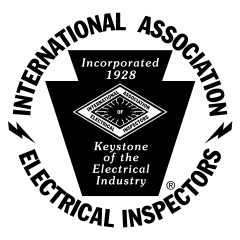 The more common drones become, the more home inspectors are incorporating them into their everyday repertoire. It’s for good reason, too. Drones give certified home inspectors a bird’s eye view of roofs from numerous angles. Instead of scaling a roof, which isn’t always safe, inspectors can keep their feet on the ground while the unmanned aircraft system or UAS goes aloft. With an onboard camera, inspectors and customers can see the roof and any possible defects with a high level of detail, accuracy and perspective.
The more common drones become, the more home inspectors are incorporating them into their everyday repertoire. It’s for good reason, too. Drones give certified home inspectors a bird’s eye view of roofs from numerous angles. Instead of scaling a roof, which isn’t always safe, inspectors can keep their feet on the ground while the unmanned aircraft system or UAS goes aloft. With an onboard camera, inspectors and customers can see the roof and any possible defects with a high level of detail, accuracy and perspective.
There’s more to using a drone than buying a kit and getting in a few practice flights. The FAA regulates drones for professional use.
Here’s how you can stay compliant:
Sit for the Aeronautical Knowledge Test. The FAA doesn’t regulate pilots who fly for fun. But people who use drones on the job must be at least 16 years old and have a Remote Pilot Airman Certificate. That requires passing the FAA’s Aeronautical Knowledge Test, which is offered at Airman Knowledge Testing Centers across the country.
According to the FAA, this test covers:
UAS regulations for rating privileges, limitations and flight operations. Airspace classification, operating requirements and flight restrictions. Aviation weather sources and how weather affects a UAS. UAS loading and performance. Emergency procedures. Crew resource management. Radio procedures. UAS performance. Drugs and alcohol restrictions. Judgment and decision making in aeronautics. Airport operations.
Preflight inspections and maintenance.
Apply for the Remote Pilot Certificate:
After passing the Aeronautical Knowledge Test, prospective pilots are ready to apply for certification. The FAA says users should “remote pilot certificate (FAA Airman Certificate and/or Rating Application) using the electronic FAA Integrated Airman Certificate and/or Rating Application system (IACRA).”
Use the FAA IACRA system to register. You’ll need to register and set a password.
Here are the selection steps as outlined by the FAA:
 Start New Application
Start New Application
Application Type “Pilot”
Certifications “Remote Pilot”
Other Path Information
Start Application
You’ll be asked to enter your 17-digit Knowledge Test Exam ID and to sign the application electronically. After completing the TSA background check, the FAA explains that applicants will receive an email confirmation that explains how to print a copy of the IACRA temporary remote pilot certificate. After internal FAA processing is complete, they’ll mail you a hard copy of your new, permanent certificate.
Pre-flight inspections keep you, your equipment, the property and any people in the area safe. Rules for Operating a Drone for Work or Business Certification gives you the legal privilege of operating a drone in your home inspection business. But there are still rules that you’ll have to follow.
FAA breaks down the basics::
Aircraft weight must be less than 55 pounds
Aircraft must be registered
Only operate in a Class G airspace (uncontrolled with visibility of 1 mile during daytime hours)
Never fly above 400 feet
Always fly during daylight hours
Keep UAS speed under 100 mph
Always yield to manned aircraft
Never fly over people
Never operate a UAS from a moving vehicle
Although the FAA can issue a waiver for any of these rules, working outside them without a waiver can result in fines, a loss of license and other penalties.
It’s no wonder so many home inspectors use drones in their work. Because they’re not industry standard items, they give you an edge over your competition. They help you get an accurate roof inspection regardless of its slope or condition. They give customers a better view of the roof, especially with video. Plus, they’re fun to fly.
Are you ready to enter the growing home inspect
By ICA Blogger on August 14, 2017 in Home Inspection Safety
At Final Word Home Inspections we are in process of acquiring our Drone FAA License and presently use our DJI Phantom 4 for roof inspections.









